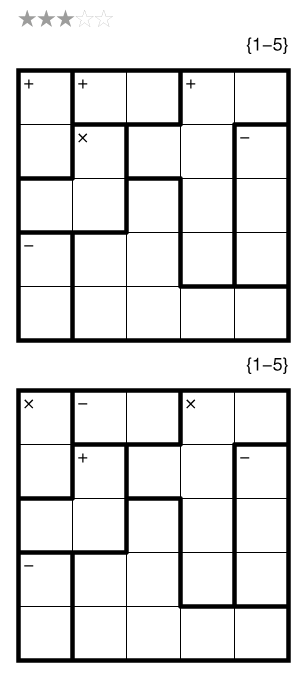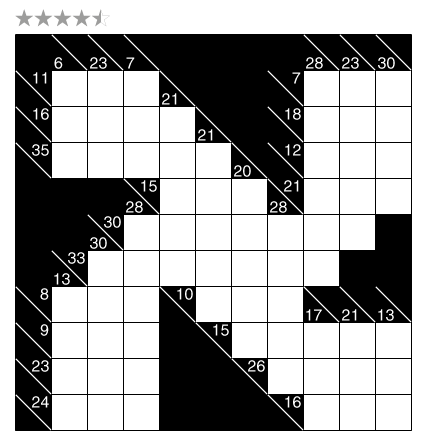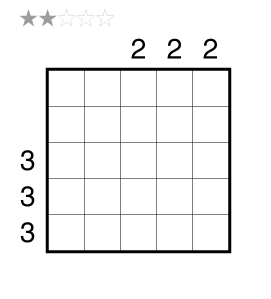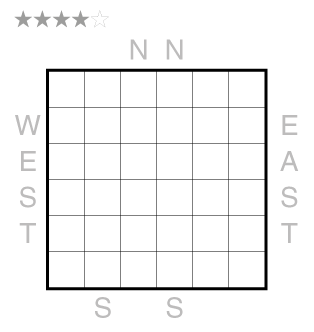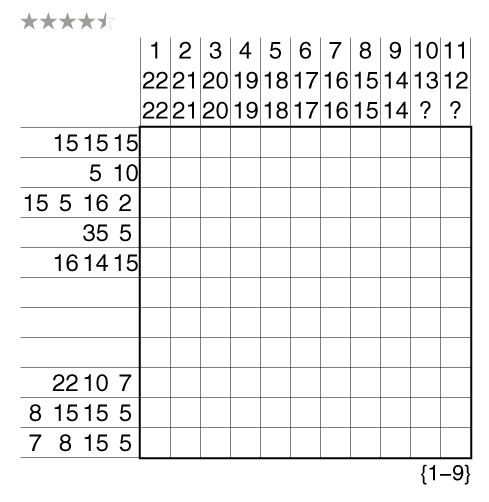You can read prior posts from my old livejournal, long before this championship, to have my opinion on playoffs. At some tournaments, like this one, the overall top solver can be clear from the individual rounds. And in the past I have been the top solver over the entire competition before the playoffs. But I’ve never been #1 after the playoffs. Rather than adjudicate the past and if there should be playoffs, I will accept the rules as they are and tell you the story of how the final ranking shaped out with a very dramatic play-offs almost fit for tv.
For these playoffs, the four competitors were in a separate room, with cameras above their desks, while everyone else could listen with commentary elsewhere. Videos are available on the official site. [I will annotate the official Finals broadcast.]
Quarterfinals and Semifinals
First was a quarterfinal with two hiccups, but that ultimately had Nikola Zivanovic in 7th advance over 8, 9, 10. The first hiccup was a Spiral Galaxies with two solutions, having eight cells chained together that are not uniquely specified. Lots of solvers turned it in but no one was accepted as correct. So the round stopped after that second puzzle, replacements were found, and it restarted. One of those replacements was a Skyscrapers Battleship puzzle with the exact same grid that had appeared in the main competition. Although no one solving in the quarterfinal remembered it, the audience knew something was wrong. After all three puzzles were completed first by Nikola, a coaches huddle followed and the other competitors agreed to accept the result despite potential of memory of the puzzle from before. Having watched all solvers, each taking 3.5-4 minutes on this grid, no one seemed to be using prior experience here. But again it is not good to have errors in the playoffs.
So the organizers held an extended break and checked the puzzles upcoming much harder before going forward. The Semifinals featured Ulrich Voigt, Kota Morinishi, my US teammate Walker Anderson, and Nikola Zivanovic. Over four puzzles, Kota and Ulrich were neck and neck through a Single Block and a Futoshiki but both got stalled by Loop Around Pentominoes. Nikola was the first to get through that third Loop puzzle and seemed like he might pull the upset in the Pinnochio Fillomino final puzzle. But there was something he wasn’t seeing and the submission was incorrect. Then Nikola’s next submission was incorrect. Ulrich recovered from the tough Pentomino Loop and Walker finished close in time too to set up another group at the end. Would Nikola finally correct his grid? Would someone else starting fresh get the answer faster? Ulrich ultimately finished first. Again, the playoffs changed nothing in the order, and #1-4 would face off, but it was quite dramatic. I was happy to have not spent the energy worrying about this round. I was working through my normal music playlist to get hyper-focused, with an added 60 minute album in the middle to deal with the delays.
We were at the main event, the Finals playoffs. 35 minutes, 5 puzzles. (Although with grading, only 31 minutes functionally.) Ken Endo would start first and then after 7 minutes, Palmer Mebane, I, and Ulrich Voigt would all start about 8 seconds apart. We started with 10 possible puzzle choices but the organizers’ checking after earlier mistakes had removed the Japanese Sums option.
Finals
[1:53:45 — start from here for video]
1:54:08 — Indeed, an impressive performance from Ken Endo throughout the championship. I had “retired” before Ken Endo appeared and change the face of WPCs. Having come back and knowing how to compete close to Ulrich and Palmer (my old nemeses) gave me comfort second was possible, Ken is something else entirely and I’d need help.
1:55:15 — Puzzle selection: So Ken Endo chose first and put Nurikabe at #1 and cancelled Double Coral (highest value and highest risk?).
1:55:40 — Palmer and I had spoken some in advance (at least to call attention to styles we wouldn’t mind appearing) and we each picked puzzles we liked and the other wouldn’t mind appearing, on the higher end of possible challenge and variance. Palmer got a Regional Fillomino at #2 …
1:56:05 — … and I got a Galaxies & Tetrominoes at #3, a style from that Round 8 Dissections where I did very well. I cancelled out Clouds, which I find too lucky than logical usually, and has been a nuisance in the past.
1:56:20 — Ulrich ended up choosing an easy mathrax and eliminated another option to put another arithmetic puzzle, wrong products, at the end.
1:57:20 — Jan Novotny, the commentator, foreshadows time advantage challenge from a Coded Nurikabe in a prior WPC playoffs for Ken. Will the regular Nurikabe be lucky this time for Ken?
1:58:59 and next 3 minutes — I had no knowledge of what was taking Ken Endo so long, but sitting and waiting this definitely seemed long. Watching later on — and I must admit I haven’t seen Ken solve very much — it seems he either tripped himself up in the lower-left with the shape of the 4, or missed core constraints that force the 9 in the lower-right. At least his solve looks a lot different from the rest of ours that will be coming and could be him getting into more intuitive than logical steps due to a bad interpretation of the left side?
2:02:00 (top middle) — Throughout the championship, I had been using a blended red/blue set of TwistErase III pencils and I put them on my instruction booklet with a V orientation (V for Victory? V for Verily since the red is down and blue is up?) while waiting out my 7 minutes. The zoom out shot shows we are just being patient as this first puzzle takes Ken awhile.
2:02:30 — A messy but ultimately correct solution by Ken is turned in after three and a half minutes.
2:03:30 — Jan mentions there are two races: “Between Ken Endo and his own mistakes” and the “race for the silver medal”. I didn’t hear this at the time, but would try my best to prove it wrong.
2:04:00 — Ken Endo gets the Regional Fillomino puzzle. Note the camera does not show the bold region shapes as well as on the paper. Ken is fairly methodical at the start to get the identity of the six digits in each region and then solves a bit. Meanwhile I’m still waiting.
2:05:57 — We all get to start the Nurikabe. The first 40 seconds you get to watch Palmer working around the grid clockwise and getting most of it right except for the 11 island.
2:07:06 — By the first focused look at my grid you’ll see I went counter-clockwise but have most of the sure bits on the paper correct and also quickly get everything but the 11 island right. I do check my count more carefully and do not turn in a wrong solution. I know there is something to fix (as does Palmer).
2:07:45 — Ulrich much more methodical here.
2:08:08 — While Ken Endo finishes his second puzzle.
2:08:20 — Palmer and I both turn in the Nurikabe about the same time; technically I solved faster by 1 second but he started with a 4 second gap so is still slightly ahead for second. With 2 minutes 20 seconds roughly in the solve, we have each carved back 1.2 minutes out of the 7 we need — provided we are right.
2:08:49 — I reform the V, because why not? I’m here for Victory or at least finishing 2nd.
2:09:13 — Fascinating that Ulrich also slows himself down at the end of the Nurikabe with an extra erasable cell in the upper-left corner. Also, his shaded cells are fascinatingly precise (i.e., they only cover 1 cell and never cross over in how they get marked). Quite the contrast from the contiguous shading I did and the very messy but fast shading Ken had done.
2:09:45 — Camera focuses on Ken and the new Galaxies and Tetrominoes puzzle while Palmer and I get the Fillomino.
2:10:10 — Palmer’s first glance mostly shows the same kind of approach Ken did, identifying the set and working slowly from the top first. When I first get the puzzle, I’m fascinated by the 4’s and the fact there are 12 regions and put these large fillominoes in immediately.
2:10:42 — Because of which region borders can be crossed, this is more limiting than it could seem and when my paper is looked at this is mostly all in as my start with a small adjustment in the lower-left. The right side isn’t guaranteed (there is a second option by scooching the two 4s up).
2:11:15 — Ken has a good (but maybe too aggressive) start to the Galaxies and Tetrominoes when we look back at him. Unlike the competition puzzle there is only one outside number clue here so most of the thinking will be about unreachable cells by galaxies as I would figure out later.
2:11:55 — Steady progress by me in the zoom out, as we go back to Ken and he has erased his Galaxies start on the left (was it all a guess?) without leaving any critical logical bits.
2:12:35 — I am finished but feel confident enough to confirm the grid to spend 5-10 seconds rather than lose time with an error. I turn in the grid before the others to get into 2nd.
2:13:00 — The spreadsheet of times in the lower-left is the only thing visible in the room to us but it lets us track the others’ progress throughout the playoffs. I am gaining confidence because, if I am correct on the Fillomino, I have gained another roughly 90 seconds back on Ken Endo and am about 4.5 minutes behind.
2:13:30 — Palmer finishes a half minute behind me (not too much room for comfort) but the gap on Ulrich before the math puzzles is good. Palmer doesn’t know it, but there was a slight error on the left side of his grid where he did not complete a valid 2 polyomino.
2:13:40 – I’ve reformed the V. Ken back near the start of Galaxies but finally noticing an important constraint which I’ll talk about soon.
2:14:07 — There are some times you are smart and some times you are lucky and in this playoff I was mostly smart but also lucky. Smart in that here (as in the Fillomino), I got a meta constraint very fast that opens the full logical path. Something Ken’s intuitive approach perhaps missed. The 5 in column two (with 6 cells as options) is a heavy constraint in the puzzle. As is the fact once you focus on fulfilling this constaint, R6C1 which cannot be reached by a galaxy readily is shaded to force the rest of the column.
2:14:24 — 25 seconds into the puzzle you get to see my grid where I have everything identified there and am simply solving to the end (admittedly I shade R8C1 too early but it is a cramped grid meaning fitting all 7 shapes is tough and the “be greedy” approach of using cells most efficiently is right most of the time). I continue to then use intuition and logic to get to a solution. R2C1 is also shaded too soon, but Galaxies is always about give and take so you’ll see I have no issue once I need to take the R4C3 cell in getting that taken back.
2:15:00 — Palmer learns of the error in the Fillomino which brings him back to Ulrich in overall time for third.
2:15:40 — You get to see a fairly empty lower-right where I’m mentally visualizing the final answer and then writing it. Another great solve (Nurikabe maybe 4 of 5 and Fillomino and G&T 5 of 5). There are now two puzzles left and things are going well.
2:16:00 — Jan Novotny on commentary calls out my lead in second and the gap closing on Ken. Just 80 seconds now with remarkable gains of three more minutes back on the puzzle style I chose! But two math puzzles to go including a super fast 6×6 one.
2:17:00 — Much to Jan’s comments, Ken does spend about a minute on the grid.
2:17:10 — I’m resigned in a 6×6 to simply writing to learn about the puzzle and not think about finding an entry point. My first digits are mostly right (just the upper-left is off and I have the middle constraints learned).
2:17:50 – And once I know how the puzzle will solve I basically am slowly writing the answer down. “Slowly” is maybe not a word I should use, as I didn’t do that poorly compared to the other two finalists here but this is the one puzzle Ken so far has been faster at.
2:18:20 — Jan is visibly excited that Wrong Products is up and has some surprises with it. No one had asked what size it would be, but going 1-20 is a slight surprise. In the sudoku championship playoffs I asked if the Sudokuro (a kakuro puzzle pretending to be a sudoku) was 1-7 like in the competition or 1-9. They didn’t answer, but the real puzzle was 1-9 and much harder.
2:19:26 — You miss my turn in but can see that I gave back 10 seconds to Ken but still have a chance on the last grid. I know Ulrich and Palmer can catch up but I’ve got a few minute lead on them both at the moment. I am starting to freak out — both at the potential to be 1st but even to just be 2nd. I have had an issue at the last puzzle in playoffs before (Beijing). I’ve had an issue with a math-heavy puzzle in playoffs before (Eger when I lost a lead on Ulrich, Belarus where I wrote an E instead of a 5 in Kakuro — long story). I don’t know yet that the Wrong Products will be a 1-20. I’m just hoping I didn’t make a silly Mathrax error and am starting to do some multiples of 7 in my head.
2:19:42 — Paper on my desk and my first reaction is to freak out. Jan correctly mentions “I wanted to see his surprise on the range of the numbers”. And younger me would have kept the bad mental image of surprise. Older me responds: it’s just a harder grid than before, which means there is a chance to make up 1.5 minutes on Ken. And while I worry others will make fun of the fact I will probably have to write all the multiples of 13 and 17 and 19 on the page, I just need to keep at it and solve smart and steady and fast enough.
2:20:50 — Yes, I have written long multiplication out for 18×19 in the right margin to confirm the product as I don’t trust my mental multiplication. At around this point I almost make a mistake which from the grid is something like 265(+/-1) = 16×18 (writing an 18 into the grid) but I double check immediately and erase the error quickly.
2:22:00 — Everyone has now gotten through 4 puzzles and there is ~3 minutes for me in front of Ulrich and Palmer although I will not know this exact time.
2:22:50 — I’m chipping away at things still (11s and then 15s) and not yet at writing multiples on the page.
2:23:30 — I’m continuing to write in the grid, with an ID for the top large sum that clears a 13 and the final crossing value for the 15. Ken is not yet writing as much in, maybe working towards a perfect factorization of all 20 numbers for one of the directions?
2:24:00 — This is exactly what is happening and the row clues look reasonable on Ken’s paper but the columns don’t have much progress on his grid. My progress is spread out.
2:24:15 — Indeed, “hard to judge who is ahead”. I’m still feeling I’m taking way too long but just grinding, grinding, grinding, not thinking of anything but the grid in front of me. The 8 I just wrote in though is in the wrong spot. Will I catch this?
2:25:30 — Ken is having more struggle at breaking out the top column clues which may mean time is coming back to me?
2:26:03 — The 8 that was wrong in my grid is now taken out.
2:26:35 — Palmer, a mathematician (but does that mean good at arithmetic?), has a lot of the top broken apart into products and some ok progress in the grid. Is it correct? A lot of the solvers have made progress in different spots.
2:26:50 — Ulrich now where Ken has been, with all the row clues broken apart seemingly (two options written on the right of the grid).
2:27:20 — I’m still the least organized in breaking apart the task, skipping from rows to columns. I’m also losing a little time in shading but keeping visually clear finished clues to help myself.
2:27:40 — But at this point I’m starting to recognize shading might be stupid? I have all the columns IDed and just start writing in numbers for what I know (the 1 and 3 in rows 4 and 5 for example). My heart jumps about 25 beats per minute. 6 entries to place.
2:28:00 — 2 numbers to place!
2:28:05 — No numbers to place!!! Is the grid full? Turn it in! Turn it in! The paper shoots to the right to the judge.
2:28:10 — My heart jumps another 25 beats. My right arm starts shaking. It will not stop shaking for another 90 minutes. But at least I only have to wait 60 seconds for my fate to be made clear. I catch up to noting the lead I had in the room entering the last puzzle…
2:29:00 — and see that Ulrich has reeled 3 minutes back and turned in. This could be bad if I made an error (as in Beijing) and he is correct before I can do a 5 second fix…
2:29:08 — But it is not bad. I have won. The V is formed one last time, without color coordination, on my booklet as my proctor tells me I am correct. I have somehow had the best third day in a WPC in my memory. I did the 2 improbable things (finish Rd 13 super fast to jump into the finals, and finish the playoffs super fast to make up > 7 minutes). And luck fell my way on the rest — the right puzzle selection, some unexpected mistakes by others….
2:33:00 — I wait out the clock as no one else finishes the wrong products.
2:33:20 — Jan: “I think he wanted this a lot”. And I really did from 2008 on after coming so close in Rio de Janeiro with the top spot becoming a 2nd after playoffs. After 2011, I would go to steps like not competing in the WSC (as reigning champion) to maintain focus for the WPC. 2012 and 2013 were both crushing defeats in different ways for me. Leading to a TIME interviewer even writing, after discussing how my focus on science may be affecting my puzzling:
“There are those who think the distraction of attempting to solve the world’s immunological woes is why Snyder is the puzzling world’s Ahab: for all his success, he has never won the individual world championship. It’s something of an obsession.”
And there is no way to deny the obsession part fully, when the history of my live blogs is out there, even if the passage of time, broader perspective, and family loss made the goal diminished entering Prague. I had partly moved on with my life after 2013, to medical pursuits, and had stopped hoping in the last few years it would be possible, had even stopped competing. This year’s win was completely unexpected. Amazing that the city of Prague, where I won the first title as mom watched from home, would be the site of this ultimate success in the first year I no longer had her cheering from afar.
I take a shower and walk outside to try to slow my heart rate and get my hand in a state I can write with it again because there are team playoffs to come. I wonder for awhile whether my attaining great mental focus over short bursts like I did earlier in the day could lead to neurologic injury. My hand finally stops shaking.
Eventually the team finals begin and there you can watch the video and I won’t write too much — the individual parts were hard and I stuck more to logic than intuition on Easy as ABCDE. Once Walker joined to help we moved much faster to complete the real assignment, I finished my grid and we tag-teamed on the other. We still made some slowing errors like not copying all the blackened cells into the second grid. We get to the team table where Wei-Hwa and Palmer have a good path close to the answer, and work for a few minutes to complete but Germany beats us by under a minute. Perhaps time I could have gotten back by a better individual solve but who knows? Japan has made a larger error which they don’t know at the time (they brought the wrong team sheet up to the main desk) and fall all the way to last when Hungary finally clears the Easy as ABCDE desk. The error in papers leads to a larger (but maybe overblown?) controversy about how team captains have been interacting in the room, generally looking at the individual desk papers as Germany and US wait 15 minutes for third place to finish.
Closing thoughts
Except for one non-unique puzzle I ran into in the main competition, something unusual in the connectivity of the loop in the last team round, and then a set of issues in the quarterfinals of the playoffs, this WPC was rather clean. The round structure (while long) had a nice split by genres and let different skill sets come into play without as much “pick your favorites” as other tournaments that mix them more together. I didn’t like all the puzzles — some still seem to need more guessing than I’d want — but there were some very stellar themed puzzles too as expected at the end. While Ken Endo and Japan had back luck in the playoffs, it meant I got a little karmic payback. I would have 4/1 WSC/WPC titles with individual ranks used. I have 3/1 WSC/WPC titles with playoffs used now. And I’m now the first person to hold both titles, at least until Kota Morinishi catches up in WPC or Ken Endo gets even better at Sudoku (already nipping me at 9th > 10th this year).
This is a very weird report to write in a very tough year in my life, that has matched low lows with this unexpectedly high high. I’m still thinking through what I’m doing with my life now that my mother has passed. That consumes a lot of time, and pushes me to work harder at Verily. In the midst of those emotions I was not ready before or after Prague for this victory. And I still struggle with the fact time away from science is not leading to cures, but time on puzzles brings joy to many in different ways. If Rounds 1-3 had me thinking of quitting puzzles altogether, the overall event and the time with friends in puzzles reaffirms that I need to keep the complex balance of both science and logic to feel whole in my life.
Thank you mom for pushing me to try hard in all the things I do, for teaching me math and multiplication, and for introducing me to puzzles. You weren’t able to see this victory, but I hope you know that I owe a lot of my success to you and dad and I miss you every day.

